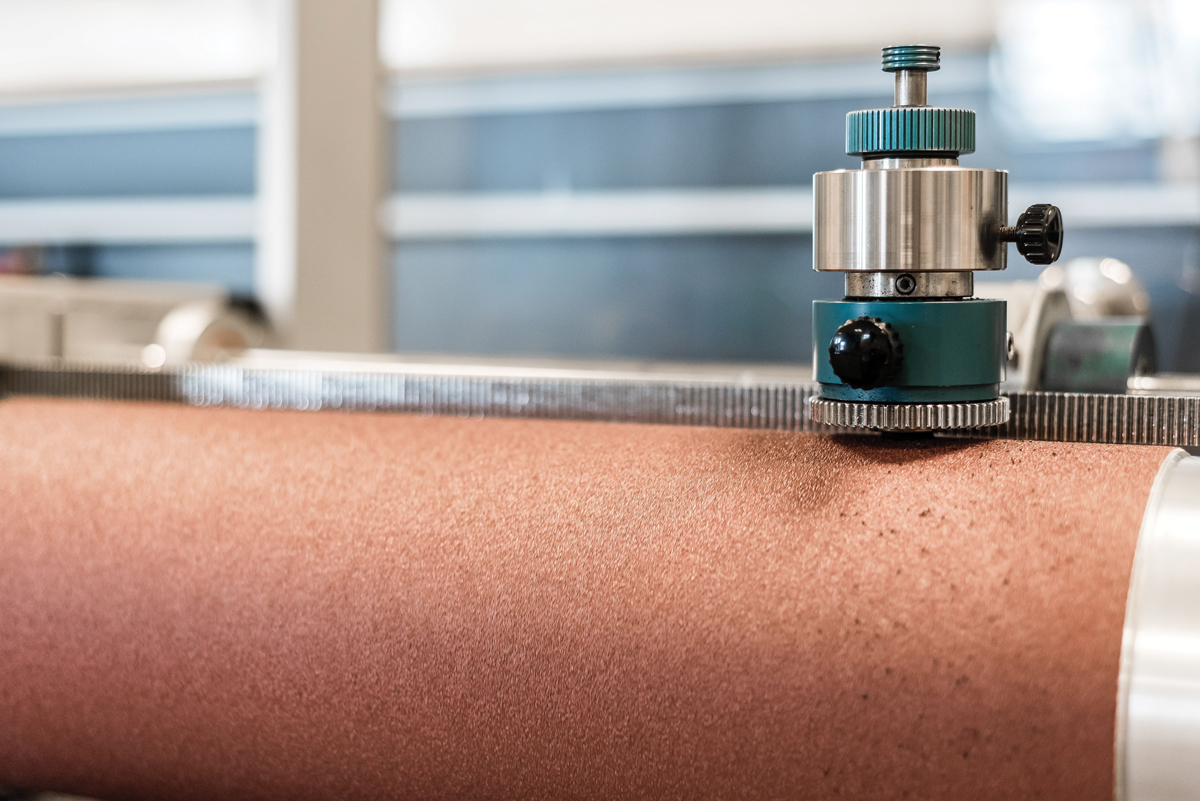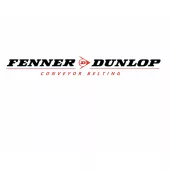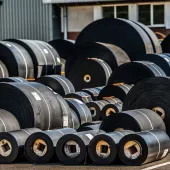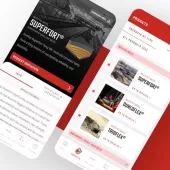Conveyor Belting: Who Sets the Standards?

Conveyor belting consultant Leslie David explains who sets the quality standards and defines the test methods, and offers some helpful guidance on what to look out for when selecting conveyor belts for specific applications in quarrying and mining.
The conveyor belt industry is a huge and highly competitive global market. To describe it as being ‘cut-throat’ would not be an exaggeration. European conveyor belt manufacturers are having to contend with the growing problem of the ‘market saturation’ tactics being employed by belt manufacturers in east Asia, primarily China. Imports of belting are arriving in Europe on an unprecedented scale and being sold at prices that many describe as being economically unsustainable.
As is the case in many other market sectors, such a high level of competition does not always benefit the end-user. The risk being posed to the future of European belt manufacturing should concern all but the most foolhardy of end-users. Questions are also increasingly being asked concerning the honest application of European and international quality and safety test methods and performance standards.
Although many view conveyor belts simply as long lengths of thick, black rubber, in reality, manufacturing conveyor belts is a surprisingly complex science. Modern-day belts have to cope with an enormous variety of potentially destructive materials, operating conditions. environmental and health and safety factors.
Consequently, there are a number of different belt carcass constructions and an even wider range of rubber compounds designed to protect those constructions. This includes everything from straightforward wear and tear, rip and impact damage to exposure to heat, oil, chemicals, ozone and UV, extreme cold and fire. With all these differing requirements comes an almost bewildering range of test methods and quality standards.
European and international standards
Globally, there are a number of different quality organizations which set standards for conveyor belting, but the most widely accepted standards (for all types of conveyor belt) are those used in Europe. There are EN standards (European Norms), which are maintained by CEN (Committee European de Normalization), and there are ISO standards (International Organization for Standardization).
Both CEN and ISO are independent, non-governmental organizations. They are the world’s largest developers of voluntary international standards. For example, the ISO membership consists of the quality standards organizations representing 168 countries. It is common to see the use of the prefix EN ISO, referring to ISO standards that have been adopted in full as the European standard.
It should be noted that, in many parts of Europe, some specific and longer-established DIN standards continue to be more commonly recognized and accepted, especially in relation to abrasion-resistant belting. The letters ‘DIN’ stand for ‘Deutsches Institut für Normung’ (German Institute of Standardization). It develops norms and standards as a service to German industry and are a highly respected non-profit organization that has been based in Berlin since 1917. Numerous DIN standards have actually been converted into EN or even ISO standards.
Although standards for conveyor belts vary between different countries, members of CEN are obliged to implement EN (European standards) as their national standards without modifications and have to withdraw any of their own national standards that may conflict with them. The standards applied in countries that are not members of CEN are in many cases found to be significantly inferior or outdated.
When assessing quality credentials, it is essential to differentiate between what is simply an approved ‘method’ of conducting a particular test (test method standard) and the actual standards ‘attained’ during that test (quality or performance standard). The fact that a belt has been tested according to a certain method (eg EN ISO 4649 for abrasion resistance) means very little. What is important is the actual level of performance achieved during the testing compared against the minimum acceptable level of performance dictated by the test standard. In other words, was the performance standard met? In the case of EN ISO 4649 abrasion-resistance testing, the performance would typically be measured against the performance standards set within ISO 14890.
CE marking
Compliance with CE quality standards is increasingly being stipulated by purchasers of industrial conveyor belts. However, CE accreditation does not apply to conveyor belts because they are not a product category that is subject to specific directives that are required to be CE marked. Nonetheless, it is still worth having a basic understanding of the role of CE quality standards and how they can sometimes be used to mislead.
The letters ‘CE’ used in the CE marking are the abbreviation of the French phrase ‘Conformité Européene’, which literally means ‘European Conformity’. The term initially used was ‘EC mark’ but it was officially replaced by ‘CE marking’ in the Directive 93/68/EEC in 1993.
By placing the CE marking on a product, a manufacturer is declaring, on his sole responsibility, conformity with all of the legal requirements to achieve CE marking. The manufacturer is thus ensuring validity for that product to be sold throughout the European Economic Area (EEA), although the mark does not necessarily mean that the product was made in the EEA. The danger is that some conveyor belt manufacturers use CE marking to create an illusion of quality and safety based on the understandable assumption that the mark is proof that the product meets strict EU standards, even though no such standards exist.
Unfortunately, a very similar mark exists which the majority of consumers may mistakenly believe is a genuine CE mark of European conformity, but actually means ‘China Export’, meaning that the product was manufactured in China (see fig. 1).
Dimensions and tolerances
In terms of dimensional standards and acceptable tolerances, such as length, width, thickness etc, all textile fabric ply construction conveyor belts are subject to ISO 14890:2013, which specifies the dimension requirements for rubber (and plastic) covered conveyor belting for general surface use on flat or troughed idlers.
Different tests for different demands
As mentioned earlier, there are many different types of belt and an even wider array of different types of rubber covers (commonly known as cover grades or cover qualities) that are needed to protect the belt carcass from whatever material they have to convey.
In virtually all cases, the protective rubber used for conveyor belt covers needs to be able to cope with a combination of harmful and damaging factors that directly affect performance and operational lifetime. The most commonly used belting in quarrying and mining applications is abrasion resistant.
Abrasion – standards
The wear-resistance quality of a conveyor belt is usually the single most important factor that will determine its operational lifetime and, consequently, its cost-effectiveness. There are two internationally recognized sets of standards for abrasion, EN ISO 14890 (H, D and L) and DIN 22102 (Y, W and X). As mentioned earlier, in Europe it is the longer-established DIN standards that are most commonly used. Generally speaking, DIN Y (ISO 14890 L) relates to ‘normal’ service conditions and DIN W (ISO 14890 D) to particularly high levels of abrasive wear. However, DIN X (ISO 14890 H) is regarded as the most versatile because, in addition to resisting abrasive wear, it also has good resistance to cutting, impact (from high drop heights) and gouging (usually caused by heavy, sharp materials).
Abrasion – testing
The test method for abrasion (ISO 4649 / DIN 53516) is actually quite simple. Abrasion resistance is measured by moving a test piece of rubber across the surface of an abrasive sheet mounted on a revolving drum (see lead photo). It is expressed as volume loss in cubic millimetres, eg 150mm3.
The most important thing to remember when looking at abrasion test results is that higher figures represent a greater loss of surface rubber, which means that there is a lower resistance to abrasion. Conversely, the lower the figure, the better the wear resistance.
The technical datasheets provided by manufacturers and traders will almost invariably show the minimum standard demanded by a particular test. Unless stated otherwise, the data shown do not reflect the actual performance achieved during the test. In other words, not the expected level of performance. This fact applies to data shown within the vast majority of technical datasheets provided by suppliers.
Rip and tear resistance – testing
Although not a cover grade in its own right, the ability to withstand the forces that rip and tear belts is often more important than any other physical attribute. This is especially true when it comes to quarrying and mining. Even the strongest, heaviest belts can be punctured and ripped by foreign objects and sharp rocks becoming trapped. A ‘rip’ is best described as what happens when a sharp object punctures the belt and cuts it longitudinally as it is pulled against the trapped object. In contrast, a ‘tear’ is best described as what happens when a section of belt is pulled apart in opposing directions.
There are currently no internationally accepted test methods or standards for testing rip resistance. Fenner in the US use a round pin or bolt that is pulled through the belt, whereas Dunlop in the Netherlands pull sections of belt through a right-angled piece of metal, which they have nicknamed 'Jack the Ripper'.
Fortunately, an international standard for tear strength does exist. The ISO 505:2017 test method measures the propagation resistance of an initial tear in textile conveyor belts, either in full thickness or of the carcass only. This test is intended for application to textile belts in installations where there is a risk of longitudinal tearing.
Although it is a defined method of testing, there are no standardized performance requirements. The test basically consists of mounting two cut ends of a test piece of belting in the jaws of a tensile testing machine. An initial tear is made in the test piece, which is then pulled apart in opposing directions. The force necessary to propagate the tear is then measured. Examination and analysis of the multi-peak tear resistance
test traces is made in accordance with ISO 6133.
Most manufacturers make little or no mention of the rip and tear resistance of their belts. In many cases, even very thick, heavy belts can rip like paper because the fabric ply simply is not designed to cope with such forces.
Cold resistance
When the ambient temperature falls below –0°C rubber begins to lose its elasticity. As the temperature falls further, the rubber continues to lose flexibility and its ability to resist abrasion, impact and cutting. Eventually, the belt is unable to trough and pass around pulleys and the belt covers and the rubber in the carcass begin to crack. Ultimately, the belt will break because frozen rubber becomes as brittle as glass. However infrequently freezing temperatures may occur, underestimating the potential damage that it can cause could be a very costly mistake.
Testing for cold resistance
There are no current internationally recognized test methods for specifically determining a conveyor belt’s ability to function in extremely cold conditions. Laboratory testing involves the use of a liquid nitrogen freezing cabinet to test samples at extreme low temperatures.
The elastic modulus of samples of rubber belts are first measured at an ambient temperature of 20°C. The samples are then placed inside the cabinet and the temperature in the cabinet is gradually reduced in 5°C stages. The elastic modulus is measured at each stage to determine when the decrease in flexibility of the rubber becomes too great, thereby identifying its lowest permissible ambient temperature.
Where there is a risk of extremely low temperatures, buyers should always ask for confirmation of the minimum operating temperature. Abrasion-resistant belts can usually withstand –30 to –40°C, but this can depend on the overall quality of the belt in the first place. Other cover qualities (such as oil or fire) are usually only able to withstand a minimum temperature of –20°C. For temperatures lower than this, conveyors need to be fitted with belts especially designed to withstand extreme cold.
Fire-resistant belting
Because fire safety is such an important issue, there are numerous safety classifications and international standards for which there are many different tests to measure the self-extinguishing properties of conveyor belts. Test methods and performance standards vary enormously depending on whether a belt is for use above or below ground. This paper focuses purely on the requirements for belts being used above ground. The reader is recommended to seek more detailed guidance if at all unsure about what level of fire resistance they need.
Basic testing
The basis of most tests for belting used in normal industrial applications is EN/ISO 340. This standard makes the distinction between fire resistance with covers (K) and fire resistance with or without covers (S). The relevance of ‘with or without covers’ is that wear reduces the amount of fire-resistant rubber that protects the flammable carcass. Although no longer used in the current EN ISO 340, the market still commonly refers to grades ‘K’ for testing with covers and ‘S’ for testing with and without covers. This originates from DIN 22103 that was used as the basis during the creation of EN ISO 340.
EN/ISO 340 tests involve exposing six individual samples of belt to a naked flame, causing them to burn. The source of the flame is then removed and a current of air is applied to the test piece for a specified. The time it takes for the belt sample to self-extinguish after the flame has been removed is measured. The duration of continued burning (visible flame) should be less than 15 seconds for each sample, with a maximum cumulative duration of 45 seconds for each group of six test samples. This determines how fire can be carried along a moving belt.
Even if a manufacturer states that their fire-resistant belt has passed the ISO 340 test, the buyer should still exercise caution. A typical conveyor belt can easily spread the fire more than 40m within 15 seconds.
Ozone and ultraviolet resistance
Although not an actual cover grade in its own right, there is no question that all rubber conveyor belts need to be fully resistant to the damaging effects of ozone and ultraviolet light. This is because at low altitude ozone becomes a pollutant. Exposure increases the acidity of carbon black surfaces and causes reactions to take place within the molecular structure of the rubber. This has several consequences, such as surface cracking and a marked decrease in the tensile strength of the rubber. Likewise, ultraviolet light from sunlight and fluorescent lighting also accelerates deterioration because it produces photochemical reactions that promote oxidation of the surface of the rubber, resulting in a loss in mechanical strength.
EN/ISO 1431 international standards
To scientifically measure resistance to ozone, samples are placed under tension (eg 20% elongation) inside the ozone testing cabinet and exposed to highly concentrated levels of ozone for a period of time (eg up to 96h).
Samples are closely examined for evidence of cracking at two-hourly intervals and the results carefully measured and recorded. Experience has determined that to be adequately resistant, the pass criteria needs to be that the rubber sample does not show any signs of cracking after 96h (at 40°C, 50 pphm and 20% strain) inside the ozone cabinet.
Despite its crucial importance, the author’s research has revealed that ozone and ultraviolet resistance is very rarely, if ever, mentioned. This is almost certainly because anti-ozonants need to be used during the mixing process of the rubber compounds and that costs money. Buyers are advised to make ozone and UV resistance an essential requirement when selecting any rubber conveyor belt.
Never make assumptions
Quality standards and testing in the conveyor belt industry is a huge and often complex subject. This paper simply provides a basic guide. Consequently, the author’s concluding advice would be, first, never assume that seeing the presence of test method reference numbers or the logos of quality organizations necessarily means what they are designed to indicate.
Likewise, technical datasheets provided by manufacturers tend to show only the performance parameters applicable to the actual test method, rather than the level of performance that the end-user can reasonably expect to be achieved. Remarkably, this even applies to something as fundamental as the dimensional standards and acceptable tolerances, such as the actual thickness of the top and bottom covers.
It is always worthwhile asking questions and requesting evidence of good practice and actual performance during the buying process and to carry out checks when the belt arrives on site. Taking that little bit of extra care could easily save companies an enormous amount of time and money.
- Subscribe to Quarry Management, the monthly journal for the mineral products industry, to read articles before they appear on Agg-Net.com





